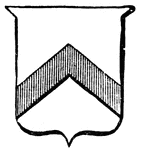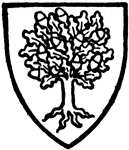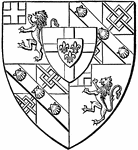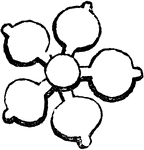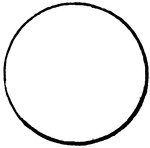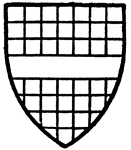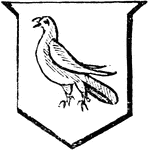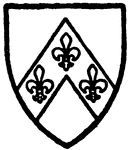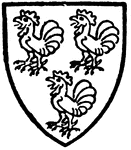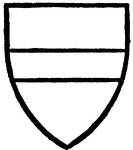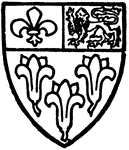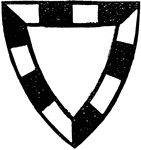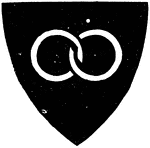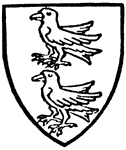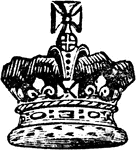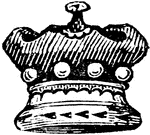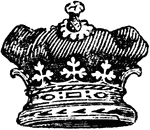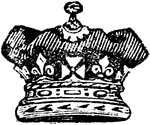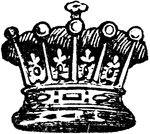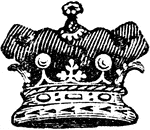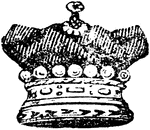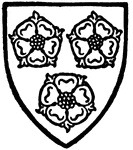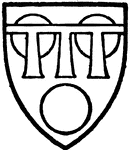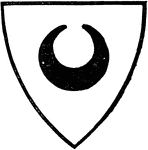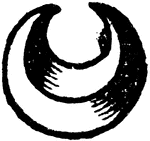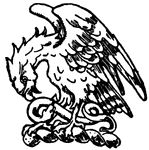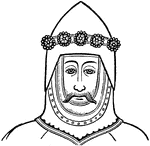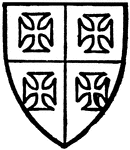
Chetwode
Chetwode bore Quaterly silver and gules with four crosses forming countercoloured- that is to say, two…
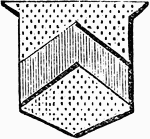
Chevron
"Or, a chevron gules. CHEVRON. This ordinary is supposed to represent the rafters of the gable of a…
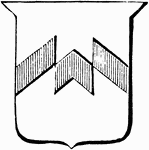
Chevron Fracted
"In heraldry, broken asunder. This condition is depicted in different ways: thus, a fesse fracted may…

Shield Showing Chevron
Argent, two chevronels, gules. The diminutives of the chevron, according to English Heraldry, are the…
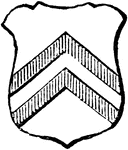
Chevronels
"Argent, two chevronels gules. CHEVRONEL. The diminutive of the chevron, being one half its size." -Hall,…
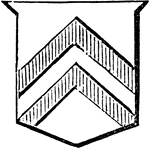
Shield Showing Chevronels
Gules, three couple-closes interlaced in base, or ... the couple-close ... is half the chevronel. -Hall,…
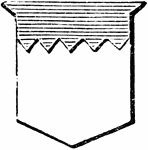
Chief Indented
"Argent, a chief, azure, indented. The chief is an ordinary terminated by an horizontal line, which,…
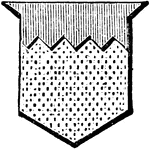
Chief Indented
"Or, a chief gules, indented. INDENTED. A serrated figure, much smaller than the dancette." -Hall, 1862
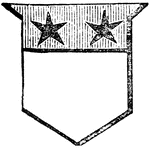
Chief Ordinary
"Argent, on a chief, gules, two mullets, sable. The chief is an ordinary terminated by an horizontal…
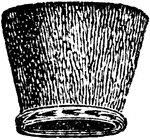
Civic Cap
"CIVIC CAP. A cap of dignity borne by mayors of cities or corporate bodies: it is formed of sables garnished…
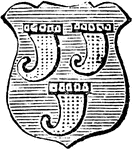
Clarion
"Azure, three clarions or. CLARION. A horn or trumpet borne in this shape in English and German coat-armour."…
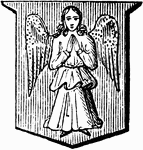
Closegirt
"Gules, an angel erect with wings expanded or, dress closegirt. CLOSEGIRT. A figure whose dress is fastened…
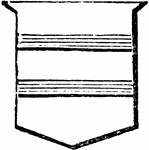
Shield Showing Closet
Gules, two barrulets, argent. The barrulet is half the width of the closet. -Hall, 1862
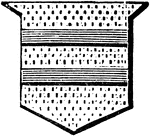
Closets
"Or, two closets azure. CLOSET. A diminutive of the bar, being only one half its width." -Hall, 1862
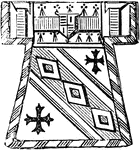
Coat Armour
"COAT ARMOUR, or Surcoat. A loose garment worn over the armour of a knight; hence the term coat of arms.…
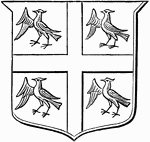
Arms of the Heralds' College
The coat of arms for the office that regulates heraldry and granting new armorial bearings.
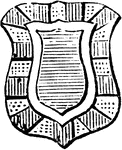
Compony
"Argent, an inescutcheon azure, border compony, or and gules. COMPONY. A term applied to a bordure,…
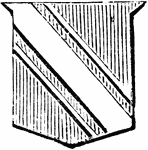
Cotice
"Gules, a bend argent, coticed of the same. COTICE. One of the diminutives of the bend: cotices are…

Shield Showing Cotice
Argent, a riband vert. The riband, which is one third less than the garter and the bendlet, must never…

Counter-Componée
"Counter-componée has two rows of squares, with a metal and color alternating."—Aveling,…
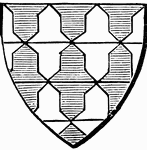
Counter-Vair Shield
"Counter-vair is when the arrangement of the little shields or bells is varied so that those of the…
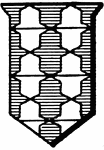
Counter-Vair Shield Fur
A shield or escutcheon emblazoned with the fur, vair, represented by alternating azure (blue) and argent…
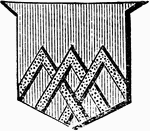
Couple-Close
Or, a cross, gules. THE CROSS ... as its name imports, was the distinguishing badge of the Crusaders,…
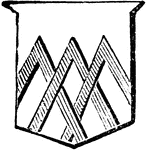
Couple-Close
"Argent, three couple-closes interlaced vert. COUPLE-CLOSE. One of the diminutives of the chevron, half…
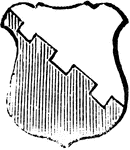
Crescent
"Azure, a crescent argent. CRESCENT. The half moon with its horns turned upwards." -Hall, 1862

Crescent Difference
"Second Son, the CRESCENT. The differences used by armorists at the present time are nine in number.…
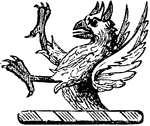
Demi-Griffin Crest
"Crest, a demi-griffin armed, gules. ARMED. This word is used to express the horns, hoofs, beak, or…
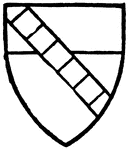
Cromwell
John Cromwell (14th century) bore Silver a chiefe gules with a baston gobony of gold and azure.
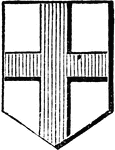
Cross
"CROSS. An honourable ordinary, more used as a charge in a coat of arms than any of the others." -Hall,…
